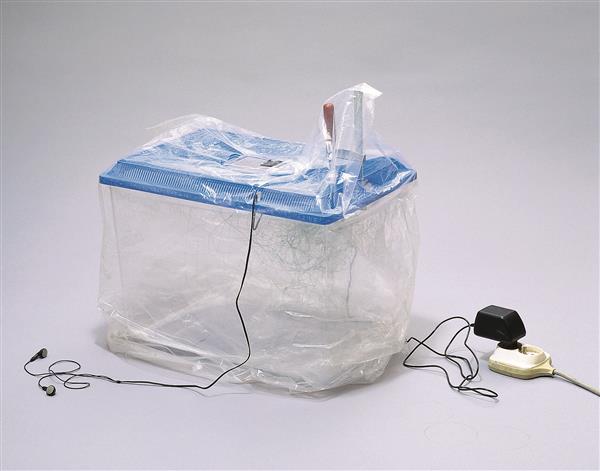Rites à intervalles réguliers vertical
Guillaume Leblon
metal and paper
edition 2/2
205 × 80 × 40 cm
2007
Acquisition 2008
Inv. No. 0178
In a collection based on such an approach as the one compiled by EVN, one will rarely come across “old stagers.” The big authorities in their respective genres, whose fundamental insights have considerably contributed to a better understanding of the current developments and changes in the arts, are out of reach. Nevertheless, Minimal Art, Conceptual Art, Modernism, and Land Art are represented here as well, even if the collection is explicitly devoted to recent art production. A younger generation’s critical review of its inspirational sources constantly offers interesting material for discussion. And often enough, this retrospective view points into the future.
The French artist Guillaume Leblon deals with twentieth-century avant-gardes – the Modernist movement in general and Minimal Art and its focus on architecture in particular. The scenes on Leblon’s stages, which he has installed at the Jocelyn Wolff Gallery in Paris and most recently for his one-man show at the Kunstverein für die Rheinlande und Westfalen in Düsseldorf, are composed of set pieces derived from the repertory of geometric forms.
The materials employed for Rites à intervalles réguliers verticaux (2007) are trivial and banal: a readymade in the form of a metal stand, such as it is used for point-of-sale displays, and sheets of colored paper. Both the colors of the sheets and their positions on the stand may vary, while the metal frame itself may be presented in a vertical or horizontal position. Yet the artist dismisses associations with the installations of Arte Povera, which operated with “poor” materials, or with Duchamp’s Bottle Rack.
Leblon is interested in modifications and transformations, not in quotations. He shifts form and content, combining analysis and narrative. He attempts a tightrope walk between historical reminiscences and a state-of-the-art outlook. When he covers his subtly balanced “structures” with wet pieces of garment, a minimal gesture mutates into a masterfully destabilized homage to creative perception – of both the producer and the beholder – and thus into one of “the best legacies of modern utopia in art.”1
Brigitte Huck, 2011 (translation: Wolfgang Astelbauer)
1) Annelie Pohlen, “Guillaume Leblon,” in: kunstforum international, vol. 182, 323.
Continue readingPublications
evn collection. 2006–2011, Cologne 2011, p. 102–103

